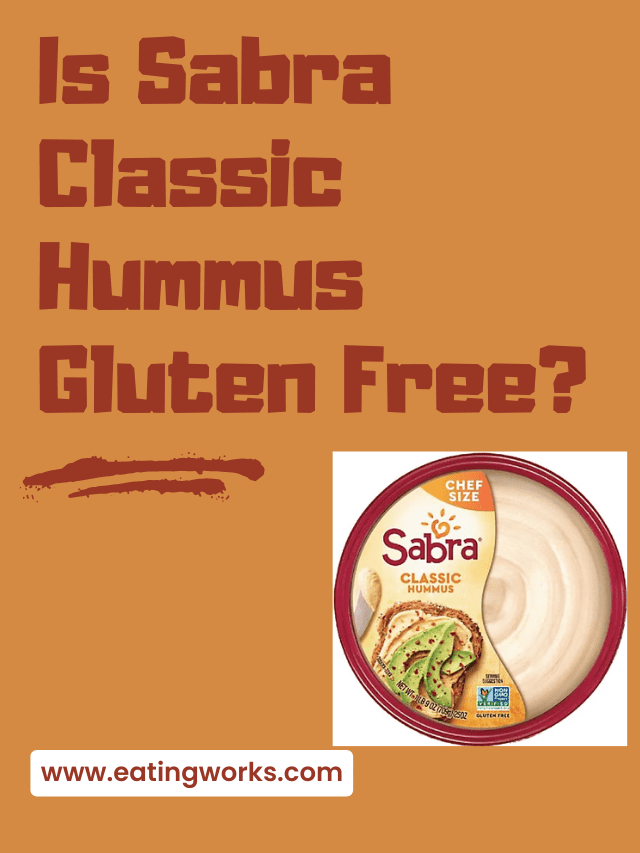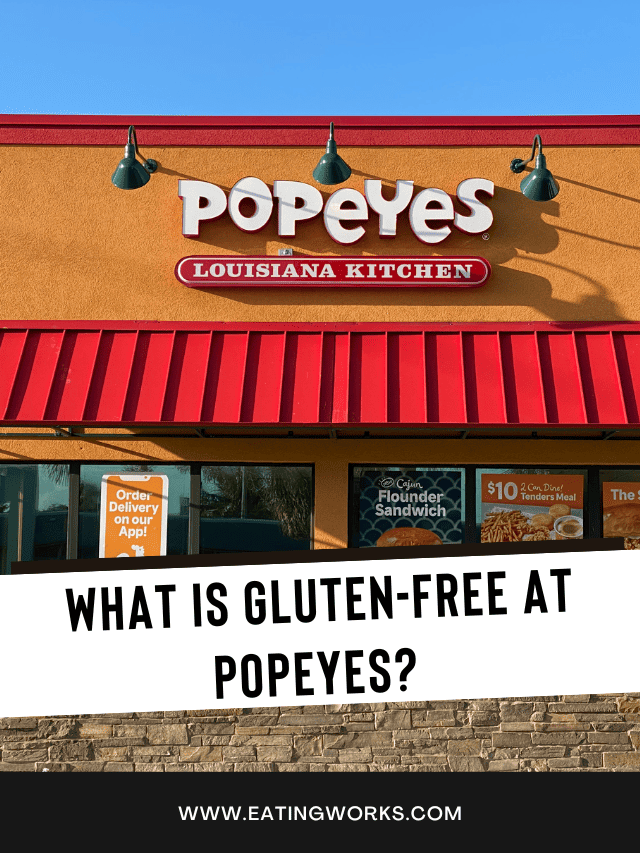Is Ramen Gluten Free? + 50 Brands of Gluten Free Ramen to Try
Is Ramen Gluten Free? Ramen is a delicious Japanese quick noodle made with miso broth that is topped with vegetables, meat, mung beans, eggs, seafood and more.
Everyone loves a piping hot bowl of ramen, but if you’re on a gluten free diet or have celiac disease you may be wondering if ramen is O.K. for you to eat. You can be rest assured that you’ll know if ramen has gluten or not after reading this quick article.
Table of Contents
- What Is Ramen?
- Is Ramen a Noodle or a Soup?
- Is Ramen Gluten Free?
- Is instant ramen gluten free? Is instant ramen bad for you?
- Common brands of instant ramen that are not gluten free?
- Healthier brands of gluten free instant ramen noodle soup
- What is ramen made from?
- What are Ramen Noodles Made of?
- Are ramen noodles gluten free?
- Can you make ramen gluten free?
- Which brands of ramen are gluten free? Brands of gluten free ramen noodle alternatives?
- What are the best Gluten Free ramen noodle substitutes?
- Are Vermicelli Noodles Gluten Free?
- A Note On Instant Ramen and Gluten Free
- Common Food Additives that Contain Gluten
- Which ingredients are good to make gluten free ramen?
- 50+ More Gluten Free Soup Recipes To Try
What Is Ramen?
Ramen is a traditional Japanese soup made with Chinese wheat based noodles and meat broth that is flavored with miso paste and soy sauce. The soup is then garnished with meat, eggs, seafood, vegetables and scallions. There are many variations of ramen. Each region in Japan makes their own kind of ramen soup.
Is Ramen a Noodle or a Soup?
This can be confusing. When people talk about ramen, what are they actually talking about? By definition ramen is a quick noodle soup dish typically served with meat, vegetables and broth. So the word ramen refers to Japanese noodle soup. While ramen noodles are the type of quick-style wheat based noodles used in ramen a.k.a Japanese noodle soup.
Phew, that was a mouth full. Does your head hurt yet? Because mine does.
Is Ramen Gluten Free?
No, traditional ramen noodles are not gluten free since their main ingredient is wheat flour. The broth is usually full of gluten as well since it contains soy sauce which is made from wheat. Generally speaking, ramen noodle soup is one of the worst meals someone on a gluten free diet could eat. It’s right up there with wheat based breads and cakes!
Is instant ramen gluten free? Is instant ramen bad for you?
Keep this in mind when you’re shopping for instant ramen noodle soup in the supermarket. Most pre-packaged ramen noodle soups are not only full of gluten but they are bad for you. According to Healthline, instant ramen noodle soup is stuffed with sodium, MSG and TBH-Q.
TBH-Q – Tertiary butylhydroquinone is a common ingredient found in instant ramen that is used as a preservative. It’s considered safe in small doses but animal studies have shown that it will cause neurological damage, increased lymphoma risks and can enlarge the liver when the animals eat it in large doses.
We’ve all been hearing about how bad MSG is for you for ages. MSG is a flavor additive that enhances the flavor of salty food. Consuming MSG has been linked to high blood pressure, headaches and stomach issues. More serious conditions like weakness, flushing of the skin and muscle tightness have also been reported.
Common brands of instant ramen that are not gluten free?
The two most popular brands of instant ramen are Maruchan and Nissin. Both of these brands are not gluten free and are definitely not good for you. If you see them and you are on a gluten free diet don’t buy them. If you want some healthier alternatives for gluten free ramen check out these brands that sell gluten free instant ramen noodle soup.
Healthier brands of gluten free instant ramen noodle soup
It’s always better to make your own homemade gluten free ramen noodle soup. It’s easy and takes only a few minutes. But there are days when we are in a rush and just need something cheap, fast and filling. For busy days where you just need to grab a bowl of instant soup lean into these healthier alternatives.
Red Miso Rice Ramen Noodle Soup Cup by Lotus Foods
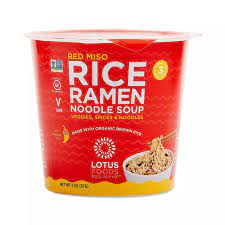
These noodles are vegan, gluten free, and free from any harmful preservatives.
Ingredients: Organic brown rice flour, red miso powder (cultured soybeans, rice, salt), tamari powder (soybeans, sea salt), salt, onion powder, wakame, garlic powder, ginger powder, sugar, dried parsley, chili flakes, chili powder.
Dr. McDougall’s Rice Noodle Gluten Free Soup Sesame Chicken
Dr. McDougall’s sells many different flavors of gluten free instant ramen noodle soup.
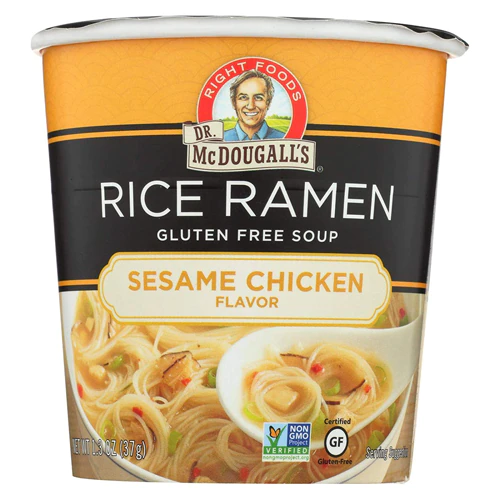
Ingredients: Rice noodles* (rice, tapioca starch), yeast extract, organic cane sugar, wheat free soy sauce (soybeans, salt)*, garlic*, potato starch, sesame flour, natural flavor, organic vinegar*, mushroom*, red bell pepper*, spices, green onion*, citric acid, organic caramel color. *Dried.
What is ramen made from?
Ramen is made of miso based broth with meat and pork which are the most common but seafood and vegetables are also popular. Lastly, Chinese wheat-based noodles and other flavorings.
What are Ramen Noodles Made of?
Now that we’ve briefly covered what ramen is and what it is made of you may be wondering what the actual ramen noodles themselves are made from.
Regular ramen noodles are made from just four ingredients:
- Wheat Flour
- Water
- Salt
- Kansui
Kansui is a special kind of water that comes from Mongolia where the lakes are rich in minerals. Essentially, Kansui is a mineral water containing sodium carbonate and potassium carbonate. It’s not that different from seltzer. The heavy mineral content in Kansui is what turns ramen noodles yellow! I always thought ramen noodles weren’t made of wheat because of their unique yellow coloring.
The stiffness commonly associated with ramen noodle texture also comes from the minerals in the water. Minerals are hard and stands up the dough in a way. This is similar to how “hard water” in your house has a high mineral content that tends to coagulate around the water tap and drain. The minerals aren’t bad for you but they create a hardness. This hardness is kind of like when pasta is cooked Al dente.
The cellophane crunch you experience is what lead people to believe that ramen is bad for you because it has plastic in it. Be rest assured that ramen noodles don’t contain plastic as an ingredient. Traditional instant ramen noodles are bad for your health because they are high in sodium not because they are full of plastic.
That’s why I like to use gluten free or alternative types of noodles for ramen. Everything in ramen is healthy aside from the noodles. Replacing the noodle with a high quality gluten free noodle or kelp noodle transforms this traditionally unhealthy dish into a bowl of comfort food that’s actually good for you!
Are ramen noodles gluten free?
Traditional ramen noodles are made out of wheat so they are not gluten free. They do sell different types of gluten free ramen style noodles in the supermarket.
My favorite brand of gluten free ramen noodles are Lotus Foods. But there are plenty of brands of gluten free ramen and different types of naturally gluten free alternatives that you can use instead of traditional wheat-containing noodles.
There is a section below that includes a round up of gluten free ramen noodle brands. And another section that discusses the alternative types of noodles you can use instead of regular ramen noodles.
Can you make ramen gluten free?
Luckily it’s pretty easy to make gluten free ramen noodle soup. So if you are on a gluten free diet or have celiac disease you can still enjoy a piping hot bowl of your own. You just need to swap out regular ramen noodles for a gluten free ramen noodle or an alternative type of noodle like kelp noodles or buckwheat noodles.
Gluten Free Ramen Noodle Soup Recipe (click here)

Check out my gluten free ramen noodle soup recipe here! If you want another type of ramen style broth you can check out my gluten free miso soup recipe. Just drop some ramen noodles in the soup 10 minutes before it’s done cooking and you’ll have a delicious vegan ramen noodle soup without gluten!
Gluten Free Miso Soup (Keto and Vegan, click here)
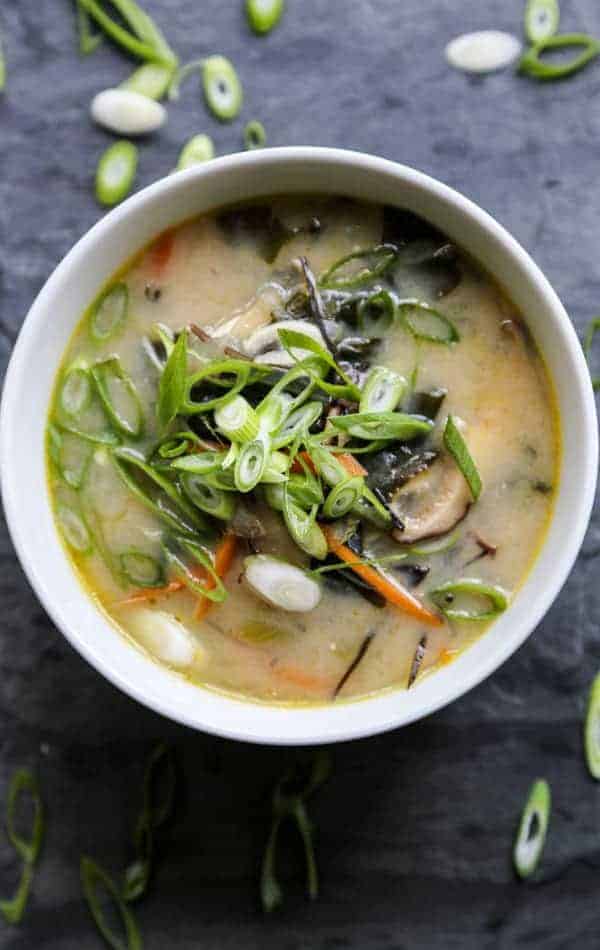
Which brands of ramen are gluten free? Brands of gluten free ramen noodle alternatives?
Eden Foods
Lotus Foods
- Organic Forbidden Rice Ramen
- Organic Brown Rice and Millet Ramen
- Organic Jade Pearl Ramen
- Brown Udon Rice Noodles
- Traditional Pho Rice Noodles
- Buckwheat and Brown Soba Rice Noodles
- Brown Pad Thai Rice Noodles
- Traditional Pad Thai Rice Noodles
Ocean’s Halo
Annie Chung
Big Green Organic Foods
- Organic Black Rice Ramen
- Organic Buckwheat Ramen
- Organic Brown Rice Ramen
- Organic Millet Ramen
- Organic Millet and Brown Rice Ramen
- Organic Buckwheat Angel Hair pasta
Explore Cuisine
- Organic Brown Rice Ramen
- Organic Edamame Ramen
- Organic Red Rice Pad Thai Noodles
- Organic Brown Rice Stir Fry Noodles
- Organic Pho Noodles
- Organic Brown Rice Pho Noodles
King Soba
- Organic 100% Brown Rice Noodles
- Organic 100% Buckwheat Noodles
- Organic Buckwheat Ramen
- Organic Black Rice Ramen
- Organic Brown Rice Ramen
Jovial
Solely
Miracle Noodle
- Organic Ready To Eat Spaghetti Stlye Noodle
- Organic Ready To Eat Fettuccine Style Noodle
- Organic Ready To Eat Angel Hair Style Noodle
Thai Kitchen
Banza
Simply Good Food
Sea Triangle
What are the best Gluten Free ramen noodle substitutes?
While gluten free ramen noodles are great for those following a gluten free diet. What if you’re eating low carb and gluten free because you’re following a diet like Keto? There are still plenty of gluten free ramen noodle alternatives you can try that are also low in carbs.
Kelp Noodles
Are low carb noodles made from kelp! They’re commonly used in Korean and vegan cooking. They also have a plasticy crunch similar to traditional ramen noodles. The only difference is that kelp noodles are thin and short while regular ramen noodles are long and stringy. If you are on an ultra healthy diet kelp noodles are a worthy replacement as long as you don’t mind that the shape of the noodle is different from regular Chinese noodles.
Shirataki Noodles
Shirataki noodles are generally considered allergy free since they’re made from yams and contain no grain, gluten, nuts or soy. If you are cooking for children with allergies or you are on a grain free diet, shirataki noodles are a great alternative to other types of gluten free noodles. Shirataki noodles are typically slimy and wet so while they are great for soups they are not good for pasta. The sauce just never sticks to the noodle quite right!
Vegetable Noodles
Vegetable noodles are a great low carb alternative to rice based gluten free ramen noodles. You can use a spiralizer to create vegetable noodles out of zucchini, sweet potatoes, yams, beets and any other kind of starchy vegetable.
Rice Noodles – Most rice noodles are gluten-free because they are made from rice flour and water instead of from wheat flour. Of course you should always check the label but most gluten free ramen noodles are made from rice based flour anyway. You can use any type of rice noodle as a replacement for ramen noodles. If you want to emulate the texture and flavor of ramen use a thicker rice noodle like the wide rice noodles from A Taste of Thai (make a link).
Buckwheat Noodles Known as Soba Noodles
Soba noodles are one of my favorite ramen noodle alternatives because they are thick and filling. Their tough texture helps them stand up to the hot broth and they don’t get mushy or fall apart in the soup. Soba means buckwheat in Japanese.
So whenever you see soba noodles on a menu or package you can assume that they are gluten free because they are made with buckwheat flour. However, take this advice with a grain of salt and always check the packaging or ask your server to double check.
Sometimes soba noodles are cut with wheat flour. If you want to buy gluten free soba noodles here are a few brands that I trust:
- Lotus Foods Organic Buckwheat & Brown Soba Rice Noodles
- Eden Foods, Organic Buckwheat Soba
- King Soba Organic Buckwheat & Sweet Potato Noodles
- Juwari Soba Noodles (100% Buckwheat Noodles – Gluten Free)
Gluten Free Spaghetti
Gluten free spaghetti is one of the easiest gluten free ramen noodle alternatives to use. The thickness and length of spaghetti and ramen are similar. The only difference is that spaghetti isn’t made with mineral water so it isn’t as crunchy and the spaghetti is straight instead of curly like ramen noodles are. Ramen noodles kind of look like hair that has been put through a krimper. I like using gluten free spaghetti because it’s easy to find in the supermarket.
A lot of the other alternatives I’ve listed in this section like kelp noodles, soba noodles and glass noodles are considered specialty items and are usually only found in fancy markets or health stores. If you live outside of a major city chances are you’ll need to order the other alternatives on Amazon.
But I can guarantee that gluten free spaghetti will be in the pasta section of every supermarket across the country. If you have kids and are on a gluten free diet there is probably already a box of gluten free spaghetti sitting in your pantry that you can use to make Gluten Free Ramen Noodle Soup!
Glass Noodles
Glass noodles are typically gluten free because they’re made from mung bean and sweet potato starch. Of course you should always check the label or ask your server if the glass noodles in a dish are gluten free, especially if you are sensitive to trace amounts of gluten or have celiac disease.
Glass noodles are extra starchy which is great because they can be served in hot soups like ramen. Unlike other noodles that get sticky, glass noodles don’t get sticky at room temperature or even cold so they work well in leftover ramen noodle soup and will stand up to being reheated.
Vietnamese Vermicelli Noodles
Vietnamese Vermicelli noodles are a type of rice noodle commonly used in asian cooking in soups and spring rolls. If you have these tasty little noodles on hand you can use them as an alternative to ramen noodles.
These noodles are also known as rice cakes and come in dried packs that look like rice cakes you would typically eat. The best way to prepare them for ramen is by soaking them in water for 5 minutes before putting them in a pot of boiling soup for the last 5 minutes of cooking.
Are Vermicelli Noodles Gluten Free?
The answer to this question is a little confusing. You see, there are two kinds of vermicelli noodles. There is the more widely known Vietnamese vermicelli noodle which is gluten free but there is also an Italian Vermicelli noodle that’s made from wheat flour.
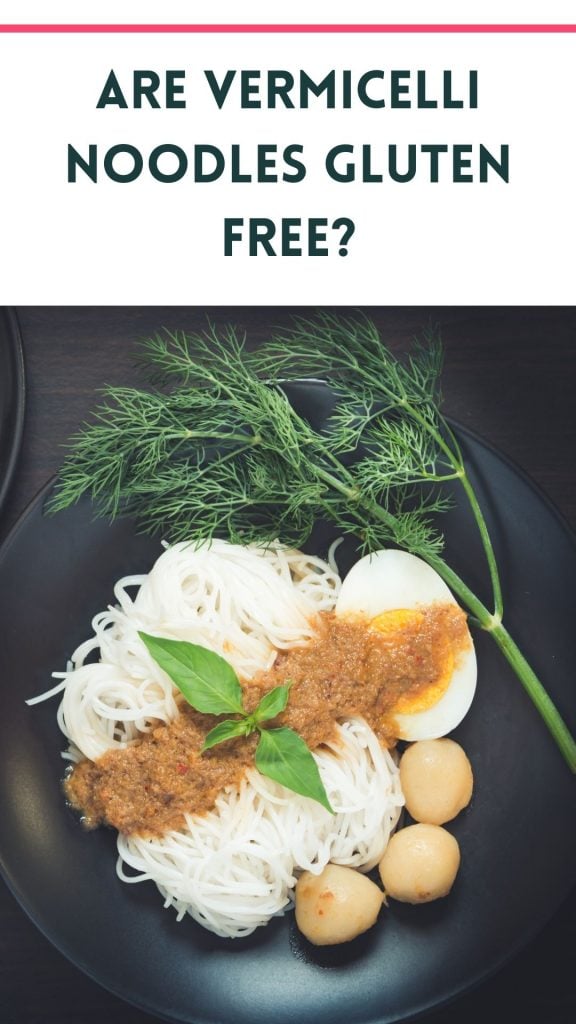
What Does Vermicelli Mean?
Technically the word vermicelli refers to the width of the noodle and not the flour used to make it. Vermicelli made from ingredients like buckwheat and rice are gluten free, whereas wheat based vermicelli isn’t.
Quick Answer: So Vietnamese style vermicelli noodles are made from ground rice flour and are gluten free while Italian vermicelli noodles are made from wheat flour and are therefore full of gluten!
Since Vietnamese vermicelli noodles are the most popular, this article will be primarily dedicated to Vietnamese vermicelli. However it’s important to note that there are two types and you should always read the ingredient list on every package!
Want to hear some great news? Yes, vermicelli noodles are 100% gluten free! These delicate noodles are made from extra fine ground rice flour. Rice is naturally gluten free. So these noodles are safe for anyone on a gluten free diet. They can even be enjoyed by someone who has celiac disease.
A Note On Instant Ramen and Gluten Free
Ramen noodles aren’t the only source of gluten in instant ramen noodle soup. If you use soup packets or eat instant ramen noodle soup there are ingredients in the broth you should look out for. It isn’t uncommon for the broth of packaged ramen to contain ingredients derived from rye, barley, wheat and other sources of gluten, like soy sauce.
Check out the list of common gluten containing additives to look out for on food labels below. It’s safest to only buy instant ramen that is labeled gluten free. To be legally labeled gluten free, according to the U.S. Food and Drug Administration (FDA), a product must contain less than 20 parts per million (ppm) of gluten.
Common Food Additives that Contain Gluten
- Wheat (bran, germ and starch)
- Malt (since it’s made from barley)
- Cracker Meal
- Soy Sauce
- Kinkel
- Vital Gluten
- Wheatgerm
- Sulfosccinate
- Seitan
- Rusk
- Teriyaki Sauce
- Durum
- Semolina
- Einkorn
- Emmer
- Farina triticale
- Farro or faro (spelt)
- Graham flour
- Hydrolyzed wheat protein
- Modified wheat starch
- Seitan
- Soy Sauce
Which ingredients are good to make gluten free ramen?
Ramen noodle soup is normally stuffed with gluten containing ingredients. From the noodles to the broth, gluten is everywhere. It is possible to make gluten free ramen that tastes authentic by using particular ingredient swaps. Here are a few ingredients I like to use to make gluten free ramen noodle soup:
Tamari – tamari is a great alternative to soy sauce in gluten free Asian cooking. Soy sauce is a salty sauce with an umami flavor that is derived from wheat. On the other hand gluten free tamari is naturally gluten free and has a similar flavor to soy sauce. You can also use liquid aminos or coconut aminos.
Dried shiitake Mushrooms: dried shiitake mushrooms have an umami flavor that adds authenticity to gluten free ramen.
Miso paste: Miso paste is naturally gluten free and is one of the most important ingredients in ramen noodle soup. Luckily it’s naturally gluten free!
50+ More Gluten Free Soup Recipes To Try
The world of gluten free soups is a big one. If you simply google gluten free soups you’ll see over 10 million results! I reached out to the best gluten free bloggers on the internet and they came up with these awesome gluten free soup recipes for you to try. No matter what kind of soup you like there is something for everyone here. Most of these recipes are both gluten free and vegan. Some are vegetarian.
There is nothing more comforting than a bowl of hot soup. If you’re on a gluten free diet you can still enjoy a cosy bowl of soup. There are plenty of Gluten Free Soup Recipes here for you to try.
Yes ramen can be made gluten free if you replace the ramen noodles with a gluten free alternative made from rice or buckwheat. You can also swap the soy sauce for tamari to make sure that the broth is gluten free.
Yes ramen noodles are a wheat based noodle that are loaded with gluten. The broth in miso soup is also made with soy sauce. Soy sauce is a derivative of wheat and is also high in gluten.
Ramen noodle soup made without gluten ingredients in the broth like soy sauce is gluten free as long as the ramen noodles used are gluten free. Ramen noodles that are gluten free include noodles made from rice flour, buckwheat, seaweed, vegetables, glass noodles and millet flour. Lotus Foods makes the best gluten free ramen noodles.
Yes, Maruchan Ramen contains gluten, the best gluten free ramen soup you can buy is sold by Lotus Foods.

FREE 7 Day Gluten Free Meal Plan
A meal plan designed to jump start whole body healing and support digestive health……
…And get the latest recipes!


